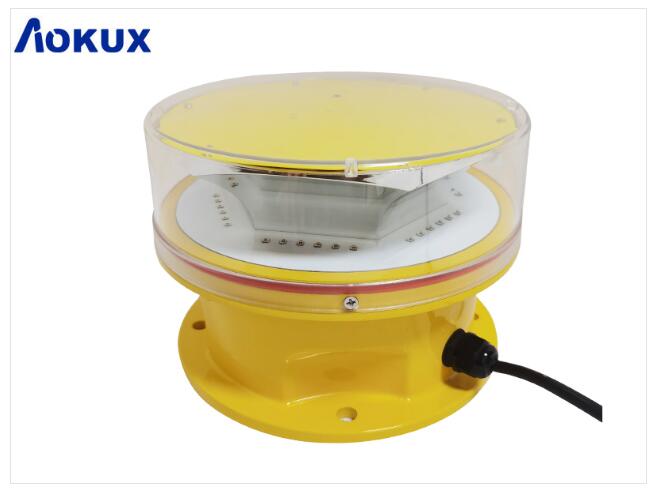
In the aviation industry, ensuring the safety of aircraft operations is paramount. One critical aspect of this safety is the use of aviation lamps to mark tall structures such as towers, buildings, and other potential obstacles. These lamps are essential for maintaining visibility and preventing collisions. However, one significant consideration for stakeholders is the cost associated with these aviation lamps. This article delves into the factors influencing the aviation lamp for tower price and aviation lamp price, exploring the elements that determine their cost, their benefits, and the technological advancements that impact their pricing.
Factors Influencing Aviation Lamp for Tower Price
The price of aviation lamps for towers can vary widely based on several factors. Understanding these factors can help stakeholders make informed decisions when purchasing and installing these critical safety components.
1. Type of Lamp
The type of aviation lamp used for towers plays a significant role in determining the price. There are various types of aviation lamps, including:
Incandescent Lamps: These are traditional lamps that have been used for many years. They are generally less expensive upfront but have higher energy consumption and shorter lifespans compared to modern alternatives.
LED Lamps: LED (Light Emitting Diode) lamps are more energy-efficient and have longer lifespans. They are more expensive initially but offer cost savings over time due to reduced energy consumption and lower maintenance costs.

Solar-Powered Lamps: These lamps utilize solar panels to harness energy from the sun, making them highly sustainable and cost-effective in the long run. They tend to have a higher upfront cost due to the inclusion of solar technology and batteries.
2. Intensity and Range
Aviation lamps come in different intensity levels, including low, medium, and high intensity. The intensity required depends on the height and location of the tower. High-intensity lamps are more expensive due to their increased power and visibility range.
3. Regulatory Compliance
Compliance with aviation safety regulations, such as those set by the FAA (Federal Aviation Administration) and ICAO (International Civil Aviation Organization), can impact the price. Lamps that meet stringent regulatory standards may cost more due to the higher quality and reliability required to pass certification.
4. Durability and Weather Resistance
Aviation lamps for towers must withstand harsh environmental conditions, including extreme temperatures, wind, rain, and snow. Lamps made from durable materials with high weather resistance tend to be more expensive due to the superior quality of construction.
5. Technological Features
Modern aviation lamps often come equipped with advanced features such as smart control systems, remote monitoring, and automatic brightness adjustment based on ambient light conditions. These technological enhancements add to the overall cost but provide significant benefits in terms of performance and maintenance.
Factors Influencing Aviation Lamp Price
The general aviation lamp price is also influenced by several key factors. While some of these factors overlap with those affecting the price of lamps for towers, there are additional considerations specific to general aviation lamps.
1. Type and Technology
As with lamps for towers, the type and technology of the aviation lamp significantly influence the price. LED and solar-powered lamps tend to be more expensive initially compared to incandescent lamps but offer long-term cost savings.
2. Application
The specific application of the aviation lamp can impact its price. Lamps used for marking runways, taxiways, or general airport lighting may have different requirements and costs compared to those used for towers.
3. Customization and Specifications
Customizable features and specifications, such as specific light colors, flashing patterns, and integration with existing airport systems, can add to the overall cost. Custom solutions tailored to unique requirements tend to be more expensive than standard off-the-shelf products.
4. Installation and Maintenance
The cost of installation and maintenance also affects the overall price of aviation lamps. Lamps that are easier to install and maintain may have higher initial costs but offer savings over time through reduced labor and maintenance expenses.
5. Volume and Bulk Purchases
Purchasing aviation lamps in bulk or as part of a larger project can sometimes result in discounted prices. Suppliers may offer lower per-unit costs for larger orders, providing cost savings for extensive installations.
Benefits of Investing in Quality Aviation Lamps
While the initial price of aviation lamps can be a significant consideration, investing in high-quality lamps offers numerous benefits that can justify the cost.
1. Enhanced Safety
High-quality aviation lamps provide reliable and consistent illumination, ensuring that obstacles and critical areas are clearly marked. This enhances the safety of aircraft operations, reducing the risk of accidents and collisions.
2. Regulatory Compliance
Investing in lamps that meet or exceed regulatory standards ensures compliance with aviation safety regulations. This avoids potential fines and legal issues associated with non-compliance and helps maintain operational licenses.
3. Long-Term Cost Savings
Although high-quality lamps, such as LED and solar-powered options, may have higher initial costs, they offer long-term savings through reduced energy consumption and lower maintenance requirements. The extended lifespan of these lamps also means fewer replacements and less frequent maintenance.
4. Environmental Sustainability
Energy-efficient aviation lamps, particularly those using LED or solar technology, contribute to environmental sustainability by reducing energy consumption and lowering greenhouse gas emissions. This aligns with global efforts to promote green aviation practices.
5. Improved Performance
Advanced technological features, such as smart control systems and remote monitoring, enhance the performance and reliability of aviation lamps. These features allow for real-time adjustments and diagnostics, ensuring optimal operation and quick response to any issues.
|
Aviation Lamp Price |
Aviation Lamp for Tower Price |
| 15 | 16 |
| 17 | 18 |